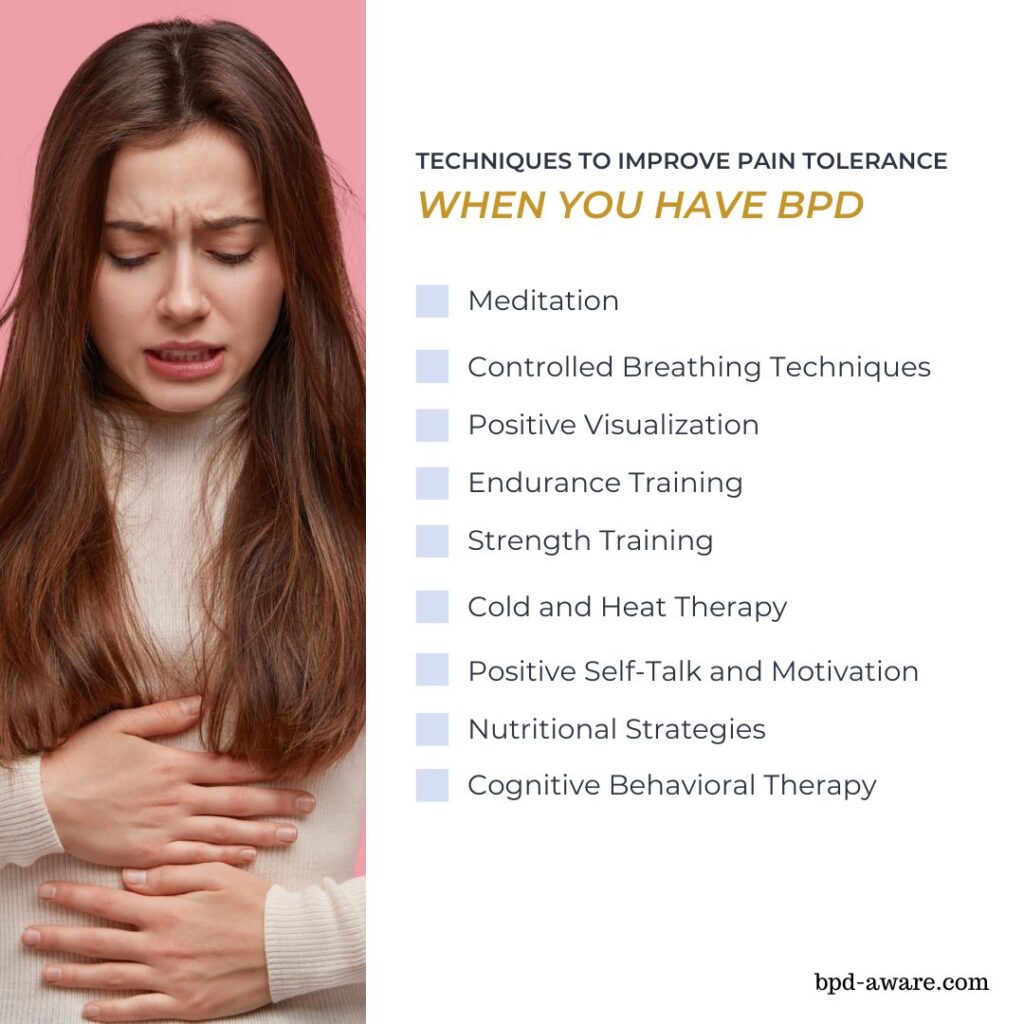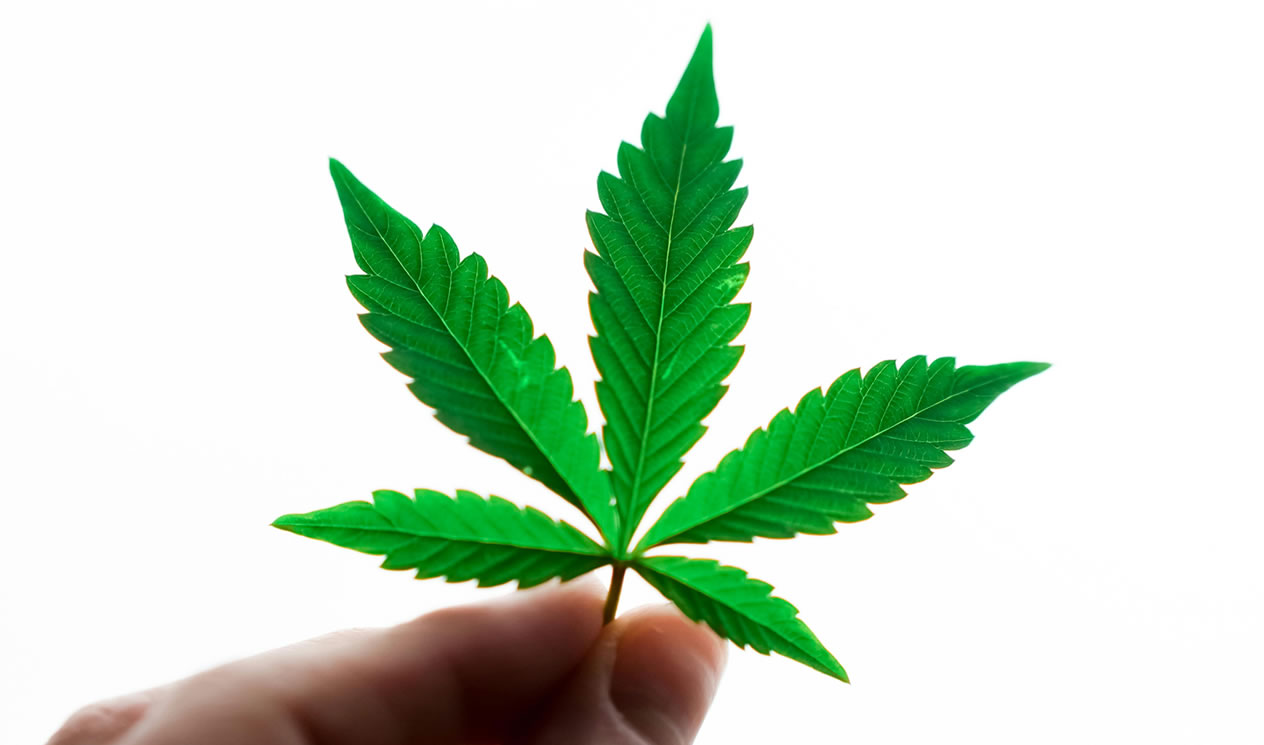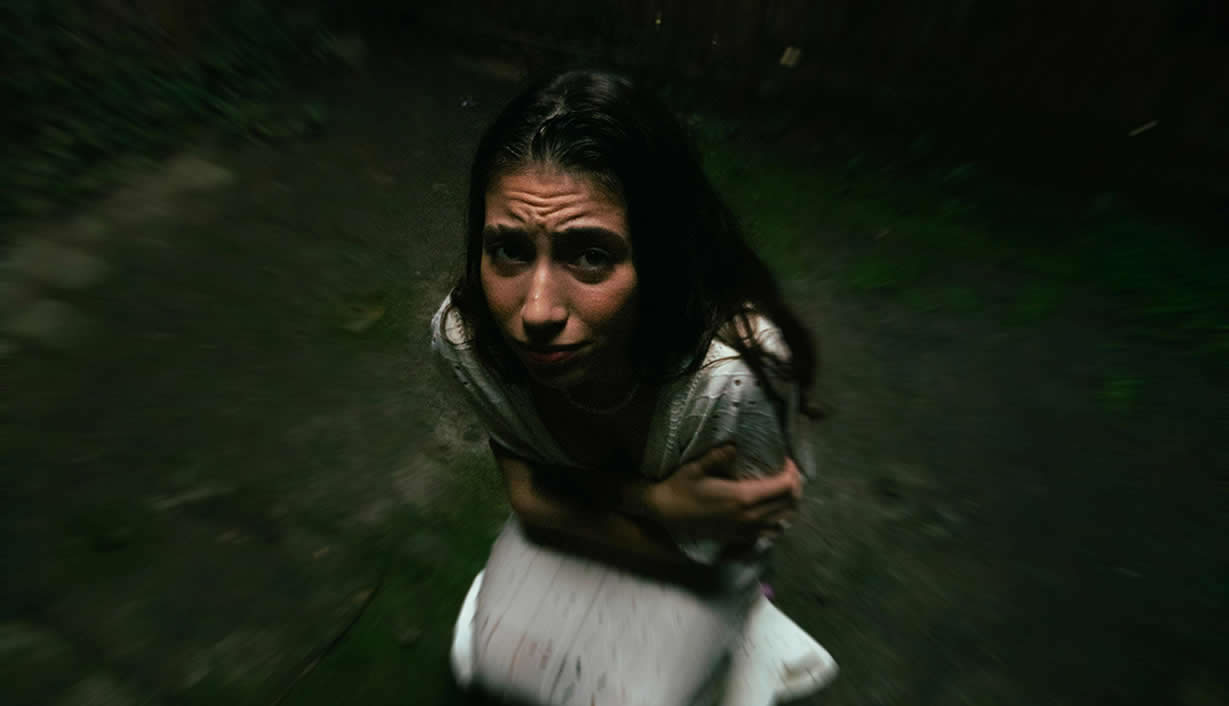There are many interesting and surprising things about Borderline Personality Disorder (BPD). From how there are 256 potential combinations of BPD symptoms to how omega-3 helps reduce BPD symptoms, there are always new findings and interesting little statistics about BPD that come as a surprise.
Recently I was pointed towards a study on how people with BPD perceive pain differently from people with people who don’t have BPD. When I started reading it, it surprised me at first but the more I thought about it, the more it made sense. After all, people with BPD perceive many things differently than those without BPD.
In this article, we’ll be looking at the mental side of pain tolerance, where the BPD brain differs from the neurotypical one in this regard, and safe techniques you can employ to improve your pain tolerance.
What Is Pain Tolerance?
Pain tolerance refers to the maximum pain threshold someone can endure before it becomes too much to bear. This threshold varies from person to person. For example, one person who bangs their knee on their desk might rate the pain as 4 out of 10, while another person who does the same thing using the same force might consider it a 7 out of 10.
Why is this? Pain tolerance can be shaped by a number of factors. Genetics, the individual’s nervous system response to pain, and overall health play a role. The body can release endorphins, which act as natural pain relievers. Someone whose body is better at releasing these endorphins is likely to have a higher pain tolerance. Endorphin production can be trained, but more on that later.
Beyond the physical aspect, there is also a mental aspect to pain tolerance. Stress, anxiety, and fatigue can all reduce someone’s ability to tolerate pain. The opposite is also true; focus, determination, and a positive mindset can all improve someone’s ability to tolerate pain. So pain tolerance isn’t just a physical phenomenon, it is deeply entwined with one’s mental state. Again, there are ways to improve your mental conditioning for pain tolerance which we will look at later in this article.
How the Pain Tolerance of People with BPD Differs
There are two main ways that the pain tolerance of people with BPD differs from those without the disorder. Firstly, people with BPD appear to be able to tolerate acute pain, especially when it’s self-inflicted, better than those without BPD. Secondly, chronic pain is less bearable for people with BPD. So, in one area people with BPD are better at tolerating pain, and in another, they are worse. Why might this be?
While there is no definite answer, there are several theories about why this might be.
In the case of acute self-inflicted pain, it could be that people with BPD dissociate and effectively shut away the pain. Another theory is that there’s a release of endogenous opioids during times of self-injury which act as pain blockers. Self-harm is an unhealthy coping mechanism but it is a coping mechanism nonetheless. It stands to reason that people who self-harm do so because it makes them feel better in some way.
However, when it comes to chronic pain, there may be a more definitive answer. Many conditions commonly co-occur with BPD, including major depression, anxiety disorders, PTSD, bipolar disorder, eating disorders, and substance abuse. All of these conditions can cause chronic pain, meaning that people with BPD have a higher rate of chronic pain than those without the disorder.
While the BPD brain seems to be able to protect itself against the pain of acute self-inflicted pain, it’s just the opposite when it comes to chronic pain. Researchers believe this is mainly down to the inability of people with BPD to self-regulate. Rather than living as healthy a lifestyle as possible to combat chronic pain, people with BPD struggle to regulate themselves in this manner. Instead, they may act impulsively and make poor choices. There is also a tendency to obsess and ruminate over negative effects, such as chronic pain. By constantly thinking about the chronic pain, the pain is essentially given more power and exacerbated in the mind of the person with BPD.
There may also be an issue of control in both cases. During acts of self-harm, the person committing the act is in control. This isn’t the case during chronic pain though. When chronic pain is being experienced, it feels very much out of control of the person with BPD. Sometimes the pain experienced isn’t the problem, it’s the lack of control and frustration that comes with it that causes the real anguish.

How to Improve Your Pain Tolerance
Now that we understand more about how people with BPD experience pain, it’s only natural to want to know (especially if you have BPD) if you can improve your pain tolerance. The answer is yes! There are several ways that you can improve your tolerance to pain, even chronic pain.
You can experiment with each of the methods below and find the ones that best work for you and fit in with the rest of your lifestyle. These methods should be performed regularly to get the best results.
- Endurance training. Activities like long-distance running, swimming, or cycling push your body to tolerate low-level discomfort for long periods. This can increase your ability to manage pain and also improve your overall health, making chronic pain less likely.
- Strength training. Like endurance training, strength training can boost your pain tolerance by forcing your body to tolerate bursts of discomfort. And, again like endurance training, it’s likely to improve your overall health and reduce the likelihood of chronic pain.
- Meditation. Mindfulness meditation has been proven to improve pain tolerance. It appears that meditation can reduce the pain signals that your brain sends to your body.
- Controlled breathing techniques. Controller breathing techniques such as deep diaphragmatic breathing or 4-7-8 breathing can help reduce the pain response by reducing stress and taking focus away from the pain.
- Positive visualization. Visualizing positive outcomes to painful situations (such as visualizing the pain as a large red spot that slowly reduces to nothing) or mentally rehearsing enduring pain during tough situations can strengthen your ability to cope with discomfort.
- Heat and cold therapy. Alternating between hot and cold therapies like saunas, steam rooms, and ice baths teaches your body to tolerate extreme discomfort. This can be done at a lower level by having a hot shower for a minute and then switching it to cold. Do be careful about how hot the water is though!
- Positive self-talk and motivation. Telling yourself things like “I can handle this!” and “I’m going to get through this!” when you’re experiencing pain can shift your mindset from negative to positive, making it easier to endure discomfort.
- Nutritional strategies. Eating a well-balanced diet and staying well-hydrated will improve your overall health and make chronic pain less likely. Foods rich in nutrients, antioxidants, and omega-3 fatty acids can also reduce inflammation, a common cause of chronic pain.
- Cognitive Behavioral Therapy (CBT). CBT, and other therapies that employ CBT techniques, can change the way you perceive pain by addressing negative thought patterns and teaching you vital coping strategies.

Final Thoughts
The relationship between BPD and pain tolerance is a complex one. On the one hand, people with BPD are better capable of tolerating short bouts of acute pain than those without the condition. On the other hand, they perceive chronic pain at a much higher level than normal.
Considering that people with BPD are also likely to have co-occurring conditions that lead to more chronic pain than the average person will experience, it becomes clear that pain tolerance training is a necessity for people with BPD.
Fortunately, there are several methods that can be employed to boost pain tolerance. With regular practice, anyone can improve their pain tolerance and improve their quality of life and well-being. When it becomes easier to tolerate pain, life in general becomes easier and more possibilities begin to open up. Suffering is never the only answer.
We hope you’ve enjoyed this article. If you have any questions or comments about pain tolerance and BPD, please let us know in the comment box below or over at our forums.
Sources, Resources, and Further Reading
- Borderline Personality and the Pain Paradox: https://pmc.ncbi.nlm.nih.gov/articles/PMC2921236/
- The perception of pain, discriminative touch and affective touch in patients suffering from Borderline Personality Disorder: https://www.sciencedirect.com/science/article/abs/pii/S0165032723011060
- Acute, Chronic, and Everyday Physical Pain in Borderline Personality Disorder: https://link.springer.com/article/10.1007/s11920-024-01498-0
















